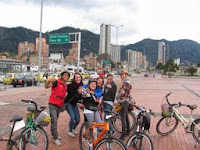 Bogota Plaza Summit Hotel:
Bogota Plaza Summit Hotel:
The strategic location of Bogota Plaza Summit Hotel gives you an easy access to the most important business and financial centers of the city. The World Trade Center located at 5 minutes from the hotel (on 100th Street and the 8th Avenue), is the most important business center of the city, with magnificent infrastructure appropriate to the current market needs.
Visit http://www.bogotaplazahotel.com/negocios_turismo.php for more information about rooms, events, and other services that could interest you.
Corferias Convention Center:

Corferias Convention Center, which is designed with one of the latest technologies, situates itself as one of the most complete convention centers in Bogotá. The security and service it offers give guarantee to the different customers of the optimal development of congresses, assemblies, conferences, and any type of event they wish to do.
These are some of the advantages offered by the Corferias Convention Center:
- Infrastructure: Size and flexibility, strategic location within the city, excellent access roads, it's close to El Dorado Airport, parking for over 3000 vehicles and a food court with international restaurants and fast food establishments.
- Integral advice and wide experience in addition to our excellent facilities it offers an integral logistical service with personalized assistance.
- Complementary services like special areas for dining, rest and free areas, logistics services for invitations, registering and telemarketing, logistics personnel (doormen, guards, supervisors, information services).
- Strategic Alliances: With transportation services and agreements with hotels.
If you want information about how to have a successful visit go to: http://www.corferias.com/en/index.cfm?doc=visitantes_como_ser



























